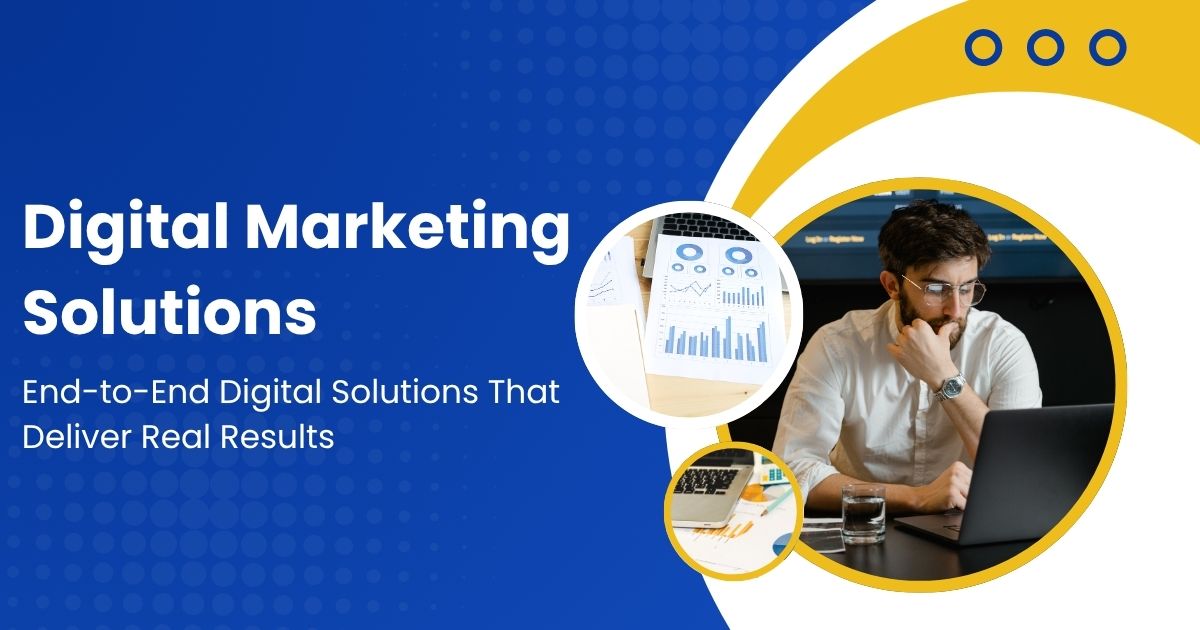
Financial institutions face unique challenges when marketing their services online. Strict regulations, complex products, and cautious consumers create a landscape that demands specialized strategies. Yet the digital shift has made online marketing essential for banks, credit unions, investment firms, and insurance companies looking to stay competitive.
This guide explores proven digital marketing solutions specifically designed for financial services. You’ll discover how to navigate compliance requirements while building trust, generating leads, and growing your client base through targeted online campaigns.
Why Financial Services Need Specialized Digital Marketing
Traditional marketing approaches often fall short in the financial sector. Consumers research financial products extensively before making decisions, regulatory bodies scrutinize every claim, and trust remains the ultimate currency.
Financial services marketing requires a delicate balance between education and promotion. Your audience needs detailed information to make informed decisions, but they also need reassurance that their sensitive data and financial future are in capable hands.
Digital channels offer unique opportunities to provide this combination of information and trust-building at scale. However, success demands strategies tailored to the financial sector’s specific requirements and constraints.
Content Marketing: Building Trust Through Education
Content marketing serves as the foundation of effective digital marketing solutions for financial services. Educational content positions your institution as a trusted advisor while helping potential clients understand complex financial concepts.
Creating Valuable Financial Content
Start by identifying the questions your target audience asks most frequently. Common topics include retirement planning, investment strategies, loan applications, and insurance coverage options. Develop comprehensive resources that address these concerns without overwhelming readers with jargon.
Blog posts, white papers, and case studies perform particularly well in the financial sector. These formats allow for detailed explanations while demonstrating expertise. Consider creating content series that guide readers through multi-step processes like buying a home or starting a business.
Compliance Considerations for Content
Every piece of content must comply with relevant regulations. Work closely with your compliance team to establish review processes that don’t slow down content production. Create templates and guidelines that help writers incorporate necessary disclaimers and disclosures naturally.
Remember that compliance extends beyond written content to images, videos, and social media posts. Establish clear approval workflows that protect your institution while maintaining content quality and timeliness.
Search Engine Optimization for Financial Keywords
Financial services face intense competition for valuable search terms. Potential clients often search for specific products like “business loans” or “retirement planning,” making targeted SEO crucial for visibility.

Local SEO Strategies
Many financial services operate locally or regionally, making local SEO essential. Optimize your Google Business Profile with accurate information, encourage customer reviews, and create location-specific content that addresses regional financial concerns.
Local SEO becomes particularly important for community banks, credit unions, and independent financial advisors who compete against national brands with larger marketing budgets.
Technical SEO for Financial Websites
Financial websites must balance user experience with security requirements. Ensure your site loads quickly despite necessary security measures, maintains mobile responsiveness, and provides clear navigation paths for different client types.
Pay special attention to page load speeds for calculators, application forms, and account access pages. Users expect fast, seamless experiences when handling financial matters online.
Paid Advertising Strategies That Convert
Paid advertising allows financial services to reach potential clients at crucial decision-making moments. However, success requires careful targeting and compelling ad copy that addresses specific financial needs.
Google Ads for Financial Services
Google Ads can drive qualified traffic when properly configured. Focus on high-intent keywords that indicate readiness to take action, such as “apply for mortgage” or “find financial advisor near me.”
Use ad extensions to provide additional information like phone numbers, locations, and specific services. This extra real estate helps your ads stand out while providing valuable information to potential clients.
Social Media Advertising Considerations
Social media platforms offer sophisticated targeting options that work well for financial services. Facebook and LinkedIn allow targeting based on income levels, life events, and professional circumstances that indicate financial service needs.
However, be cautious about making income or lifestyle assumptions in ad copy. Focus on benefits and solutions rather than demographics to avoid alienating potential clients.
Email Marketing for Client Retention
Email marketing remains one of the most effective digital marketing solutions for financial services. Existing clients represent your most valuable audience, and regular communication helps maintain relationships while identifying opportunities for additional services.
Segmentation Strategies
Divide your email list based on client types, life stages, and service usage. A recent college graduate needs different financial guidance than someone approaching retirement. Tailored messaging increases engagement and reduces unsubscribe rates.
Consider behavioral segmentation based on website activity, product usage, or communication preferences. Clients who frequently use online banking might appreciate digital-first communications, while others prefer phone consultations.
Automated Email Sequences
Develop automated sequences for common scenarios like new account openings, loan applications, or major life events. These sequences provide consistent communication while freeing up staff time for personalized interactions.
Include educational content alongside promotional messages. Clients appreciate guidance on topics like budgeting, saving, or understanding market changes, even when they’re not actively seeking new products.
Social Media Marketing in Financial Services
Social media marketing for financial services requires a strategic approach that balances engagement with professionalism. These platforms offer opportunities to humanize your brand while demonstrating expertise.

Platform Selection and Strategy
LinkedIn works well for B2B financial services and professional financial advice. Facebook reaches broader consumer audiences and supports detailed targeting options. Twitter allows for timely market commentary and customer service.
Focus your efforts on platforms where your target audience is most active rather than trying to maintain a presence everywhere. Quality engagement on fewer platforms outperforms sporadic posting across multiple channels.
Compliance and Social Media
Social media posts must meet the same compliance standards as other marketing materials. Establish clear guidelines about what can be shared, who can post on behalf of the company, and how to handle customer service inquiries in public forums.
Consider using social media management tools that include approval workflows and archiving capabilities to maintain compliance records.
Marketing Automation and CRM Integration
Marketing automation helps financial services maintain consistent communication while personalizing interactions based on client behavior and preferences.
Lead Nurturing Sequences
Develop automated sequences that guide prospects through the decision-making process. Financial services often involve long sales cycles, making consistent nurturing essential for conversion.
Create different sequences for different products and client types. A small business owner considering a commercial loan needs different information than an individual opening a savings account.
Integration with Financial Software
Connect your marketing automation platform with your existing financial software to create seamless client experiences. This integration allows for personalized communications based on account activity, balance changes, or upcoming payment dates.
Proper integration also helps identify cross-selling opportunities by analyzing client behavior patterns and financial circumstances.
Measuring Success in Financial Services Marketing
Success metrics for financial services marketing extend beyond typical digital marketing KPIs. While website traffic and social media engagement matter, ultimate success comes from client acquisition, retention, and lifetime value.

Key Performance Indicators
Track metrics like cost per lead, lead-to-client conversion rates, and average client lifetime value. These metrics provide better insights into marketing ROI than vanity metrics like social media followers or email open rates.
Monitor compliance-related metrics such as complaint rates, disclosure visibility, and content approval times. These operational metrics ensure your marketing program remains sustainable and compliant.
Attribution and Analysis
Financial services often involve multiple touchpoints before conversion. Implement tracking systems that capture the full customer journey from initial awareness through account opening and ongoing service usage.
Consider the extended timeline for financial decisions when analyzing campaign performance. A mortgage campaign might generate leads immediately but conversions over several months.
Building Your Digital Marketing Strategy
Digital marketing solutions for financial services require careful planning, consistent execution, and ongoing optimization. Start by identifying your primary client types and their preferred communication channels, then develop targeted strategies for each segment.
Success in financial services marketing comes from building trust through consistent, valuable communications while maintaining strict compliance standards. Focus on education over promotion, personalization over mass messaging, and long-term relationships over quick conversions.
The financial sector’s digital transformation continues accelerating, making sophisticated marketing strategies essential for growth. Institutions that embrace these digital marketing solutions while maintaining their commitment to client service will thrive in an increasingly competitive landscape.


Leave a Reply